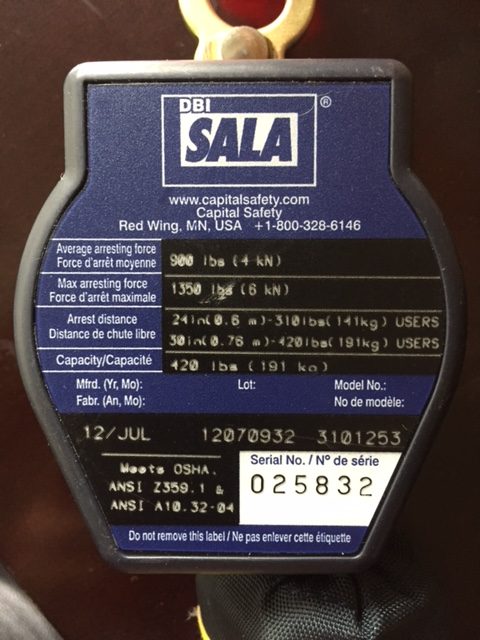Fall protection equipment manufacturers are innovators. They are constantly developing new types of equipment and upgrading the capabilities of existing equipment. Self-retracting lanyards (SRLs or ‘yo-yos’) provide a great example of this innovation. (Trends in equipment design are an important aspect of our Fall Protection Competent Person classes. Click here for more information.)

When self-retracting lanyards (SRL) were first invented decades ago, they were generally only used in a manner that restricted the freefall to two-feet or less. In other words, the SRL was anchored overhead. But as these devices became more popular, many employers began using them in a variety of ways which, in some cases, was outside of the manufacturer’s limits. An example would be using an SRL when working on a leading edge (a leading edge is an unprotected edge that is under construction which means that it is changing position as is it being built).
When you anchor the SRL back from a leading (or unprotected edge) and the worker falls you have two problems. First of all the freefall would be more than two feet (probably about five) and there's a chance the SRL would fail. Secondly, you would be dragging the lanyard over a potentially sharp edge and exposing it to cutting action especially in cases where there was a swing fall.
In response, the equipment manufacturers began to build additional classes of self-retracting lanyards. Currently the following types are available:
- Standard SRL: Lightweight and inexpensive, these provide an excellent solution IF the freefall is kept to two-feet or less.
- SRL-R: The R stands for rescue, so these retractables include a winch that can be used to lift a fallen worker.
- SRL-LE: The LE (or leading edge) retractables can handle a longer freefall distance (up to five feet or so). They can be used on leading edges or with an anchor at the employees’ feet (also called foot-level drops).
SRL-LEs can also be divided into:
- Sharp Edge: These devices resists cutting if the fall occurs over an edge with a typical I-Beam (0.50mm edge radius).
- Extremely Sharp Edge: These devices have a steel cable which is certified to withstand a fall over an edge as sharp as typical sheet metal (0.13 to 0.50mm edge radius).
Classes of Self-Retracting Lanyards (SRLs)
In 2012 ANSI (the American National Standards Institute issued ANSI Z359.14-2012 that specified the design, construction, and testing of self-retracting lanyards. Among many other requirements they developed two distinct classes of SRLs.
- Class A devices allow for a maximum of 24” deceleration distance and average arresting force of 1350 pounds.
- Class B devices have a maximum of 54” deceleration distance and average arresting force of 900 pounds.
The main difference between the two is the maximum deceleration distance. When close to lower levels or obstructions, a Class A device is used because it will stop you in less distance. Working at higher heights, Class B would be preferred.
Why not always use a Class A? The Class A limits the deceleration distance by increasing the average arrest forces by about 400 pounds. This places strain on the decorating worker.
How do I know what kind of Self-Retracting Lanyard (SRL) I have?
Take a close look at the label. All the information you need should be right there. If the label can’t be read, retire the equipment. In some case you can get new labels from the manufacturer.